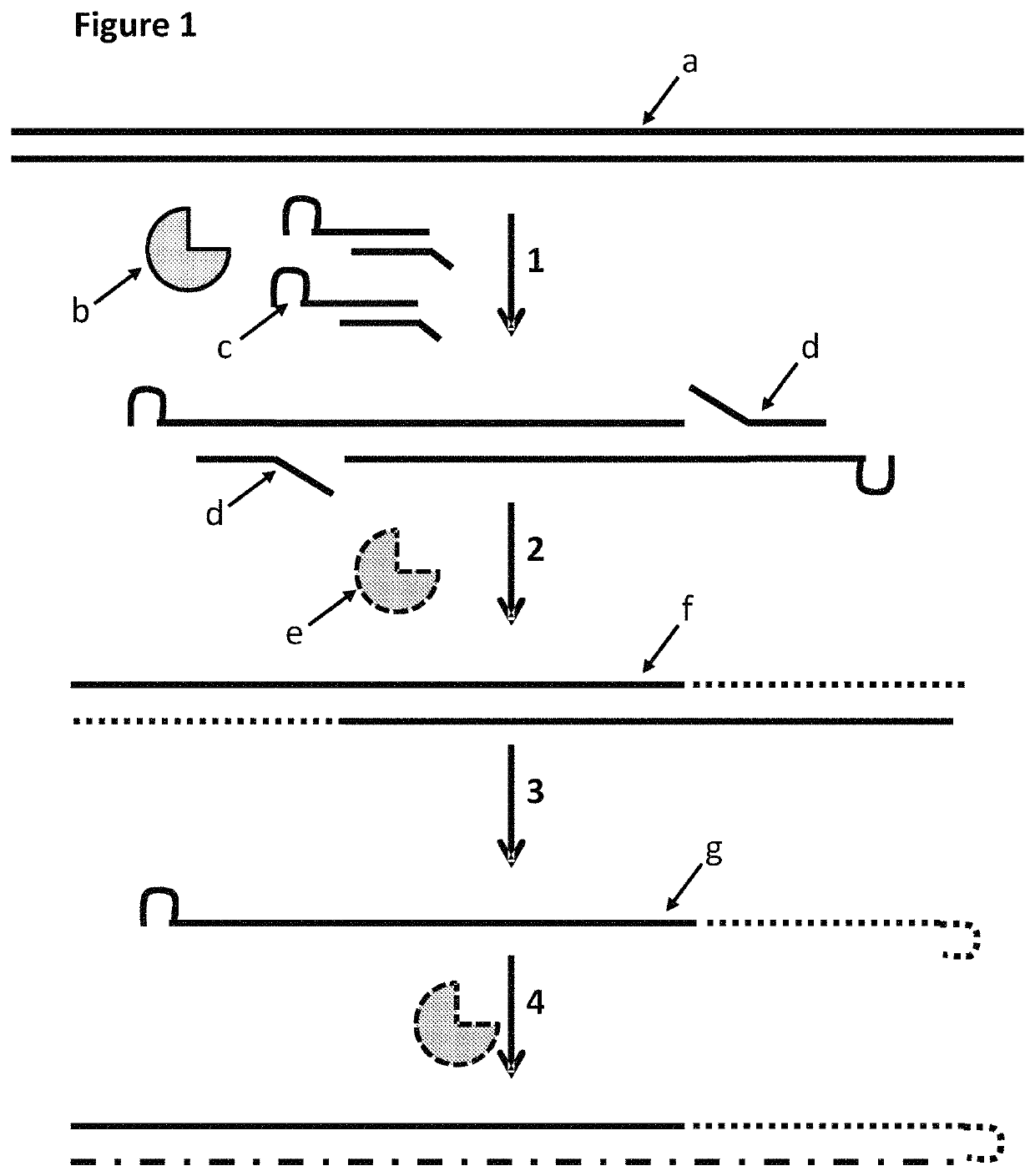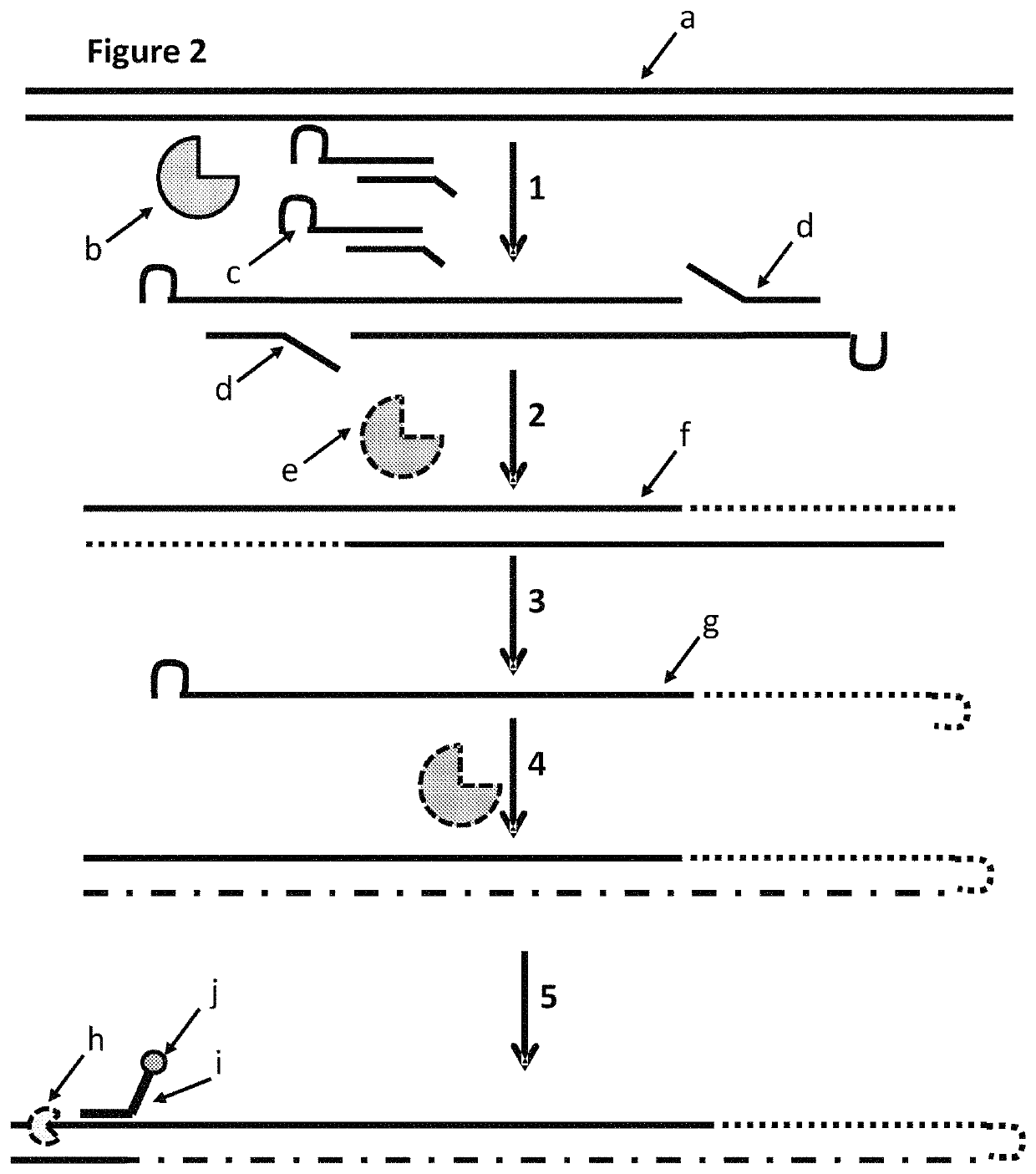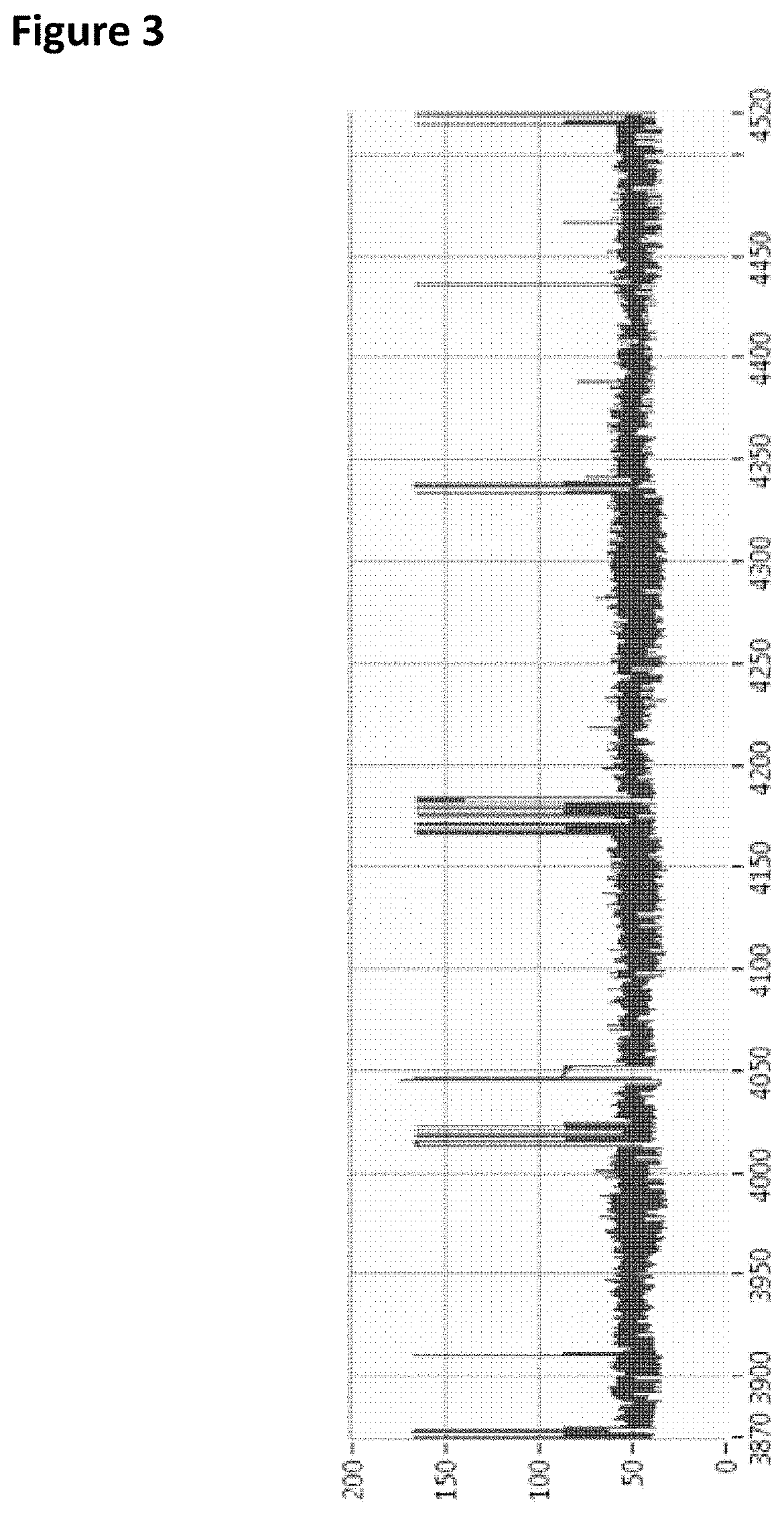Method for modifying a template double stranded polynucleotide using a MuA transposase
a double stranded polynucleotide and template technology, applied in the field of modifying a template double stranded polynucleotide, can solve the problem of double stranded structure, and achieve the effect of convenient characterisation
- Summary
- Abstract
- Description
- Claims
- Application Information
AI Technical Summary
Benefits of technology
Problems solved by technology
Method used
Image
Examples
example 1
This example describes a method for modifying a template double stranded polynucleotide, especially for characterisation using nanopore sequencing. This example shows that MuA transposase was able to insert MuA substrates which contained a hairpin loop. The gaps in the construct were then filled using a polymerase and the double-stranded construct was then heated in order to melt the double-stranded DNA. This resulted in single-stranded DNA which had a hairpin from which a polymerase produced a complement. This construct was then ligated to an adaptor with a pre-bound enzyme and finally hybridised to a tether. This DNA construct then exhibited helicase controlled DNA movement through a nanopore.
Materials and Methods
1.1—Fragmentation of the DNA Template Using the MuA Transposase
The MuA adapter X that was used in this example had a 5′ 21 bp hairpin (adapter labelled c in FIG. 2, upper strand=SEQ ID NO: 29, lower strand=SEQ ID NO: 30 attached at its 5′ end to the 3′ end of the sequence...
example 2
This example describes a method for modifying a template double stranded polynucleotide, especially for characterisation using nanopore sequencing. FIG. 7 shows a cartoon representation of the sample preparation steps described in steps 2.1 and 2.2 below. This example shows that MuA transposase was able to insert MuA substrates which contained a hairpin loop which contained analogues of dG and dC in the hairpin loop of the MuA adapter (dG was replaced with deoxyinosine and dC was replaced deoxyzebularine). The gaps in the construct were then filled using a polymerase which replaced the overhang strands with new strands which complemented the strands comprising the hairpin loops. The new strand, which complemented the strand comprising the hairpin loop, was also capable of forming a hairpin loop. The hairpin loop of the new strand had a higher Tm than the double stranded region formed between the complementary strand and the hairpin loop which was made of A / T / Z / I (labelled 1X in FIG....
PUM
| Property | Measurement | Unit |
|---|---|---|
| temperature | aaaaa | aaaaa |
| temperature | aaaaa | aaaaa |
| temperature | aaaaa | aaaaa |
Abstract
Description
Claims
Application Information
 Login to View More
Login to View More - R&D
- Intellectual Property
- Life Sciences
- Materials
- Tech Scout
- Unparalleled Data Quality
- Higher Quality Content
- 60% Fewer Hallucinations
Browse by: Latest US Patents, China's latest patents, Technical Efficacy Thesaurus, Application Domain, Technology Topic, Popular Technical Reports.
© 2025 PatSnap. All rights reserved.Legal|Privacy policy|Modern Slavery Act Transparency Statement|Sitemap|About US| Contact US: help@patsnap.com



